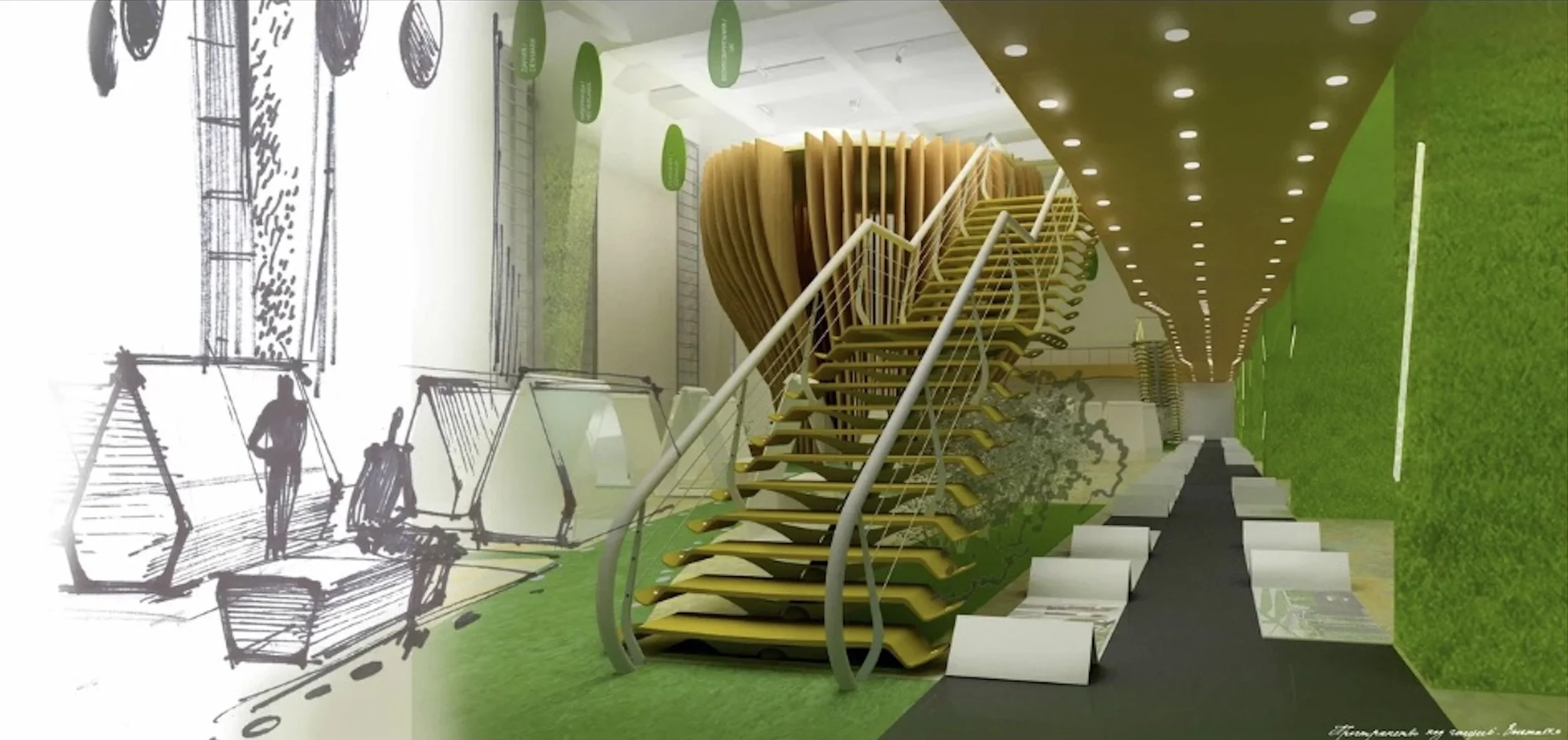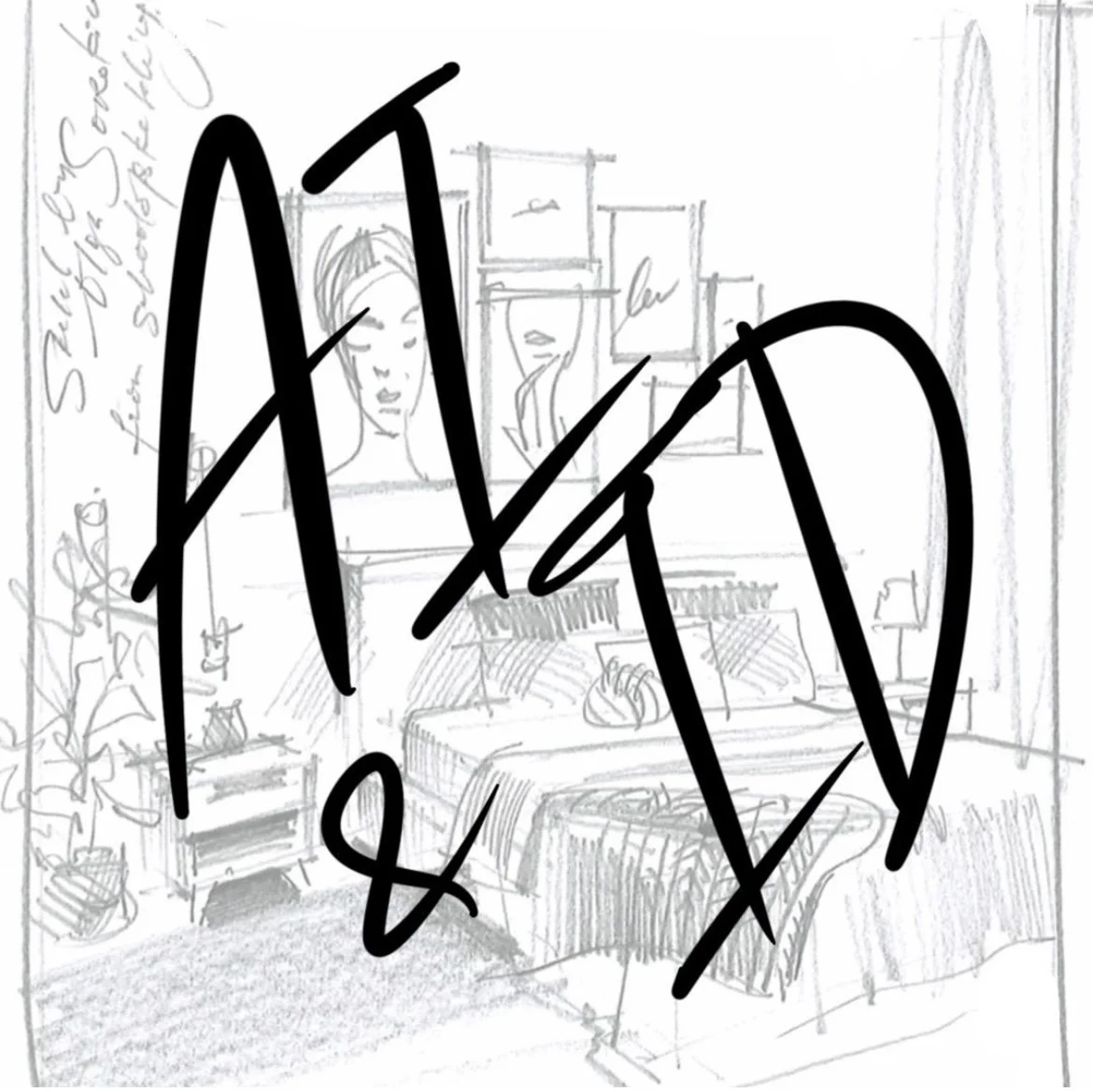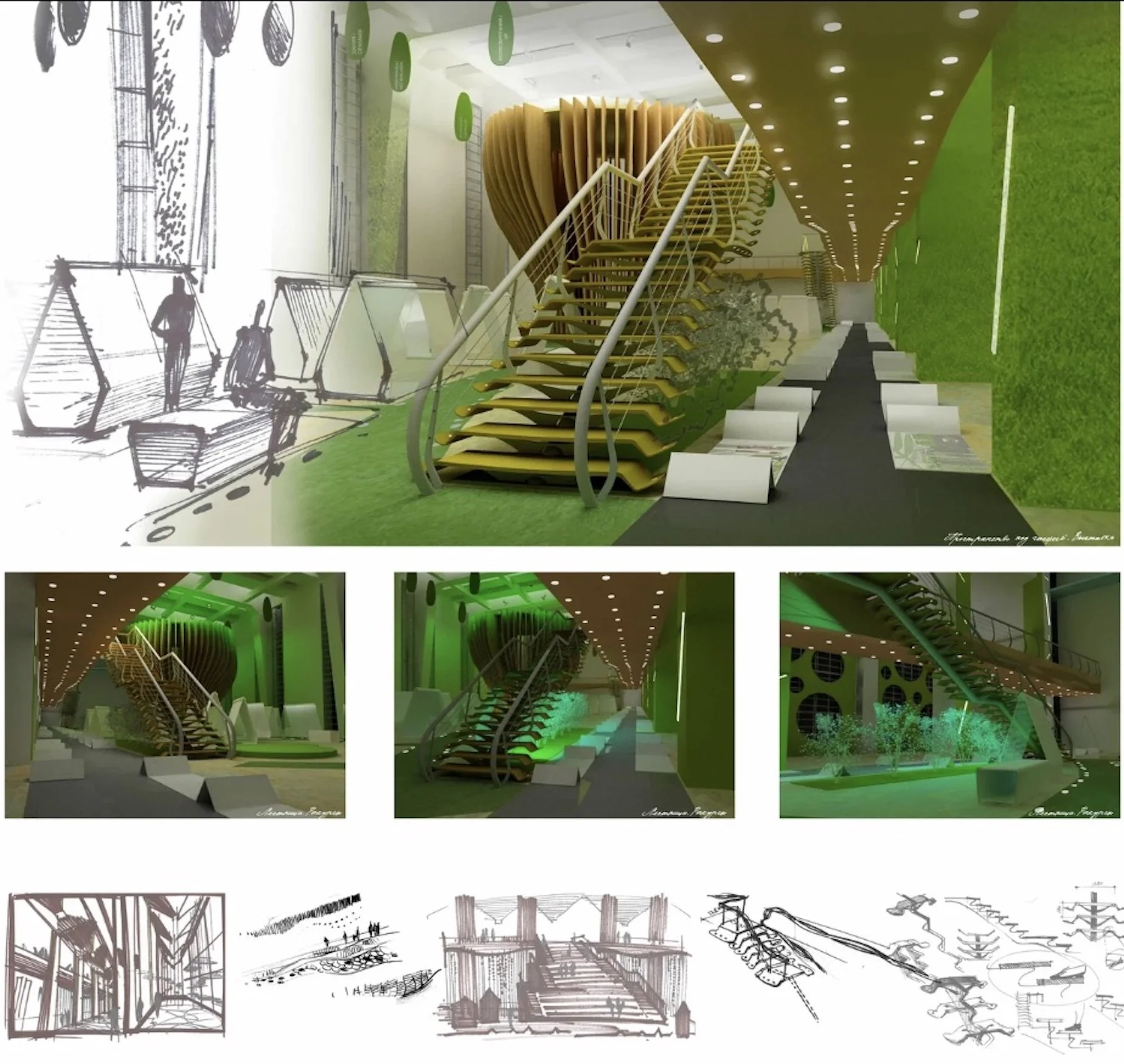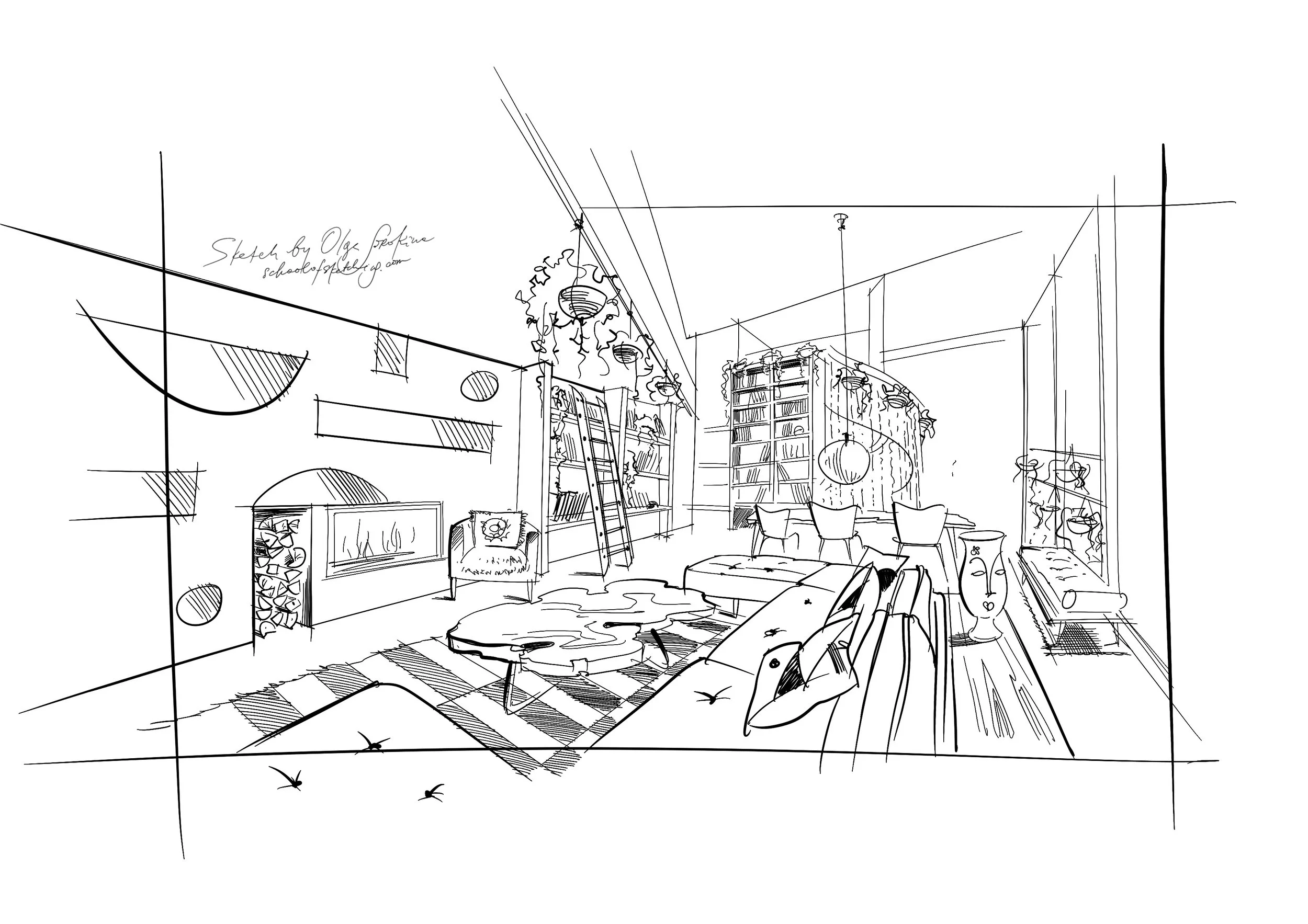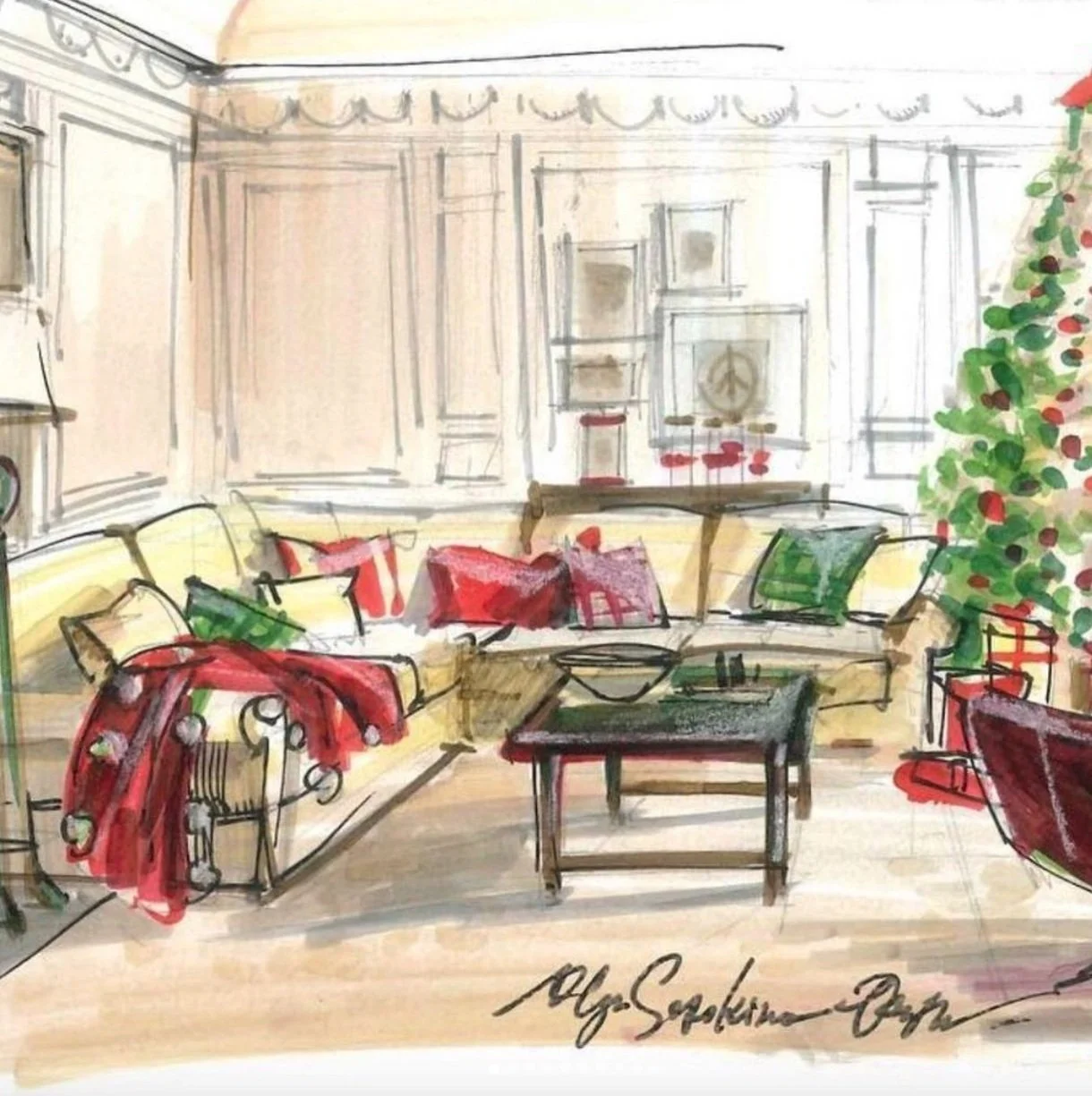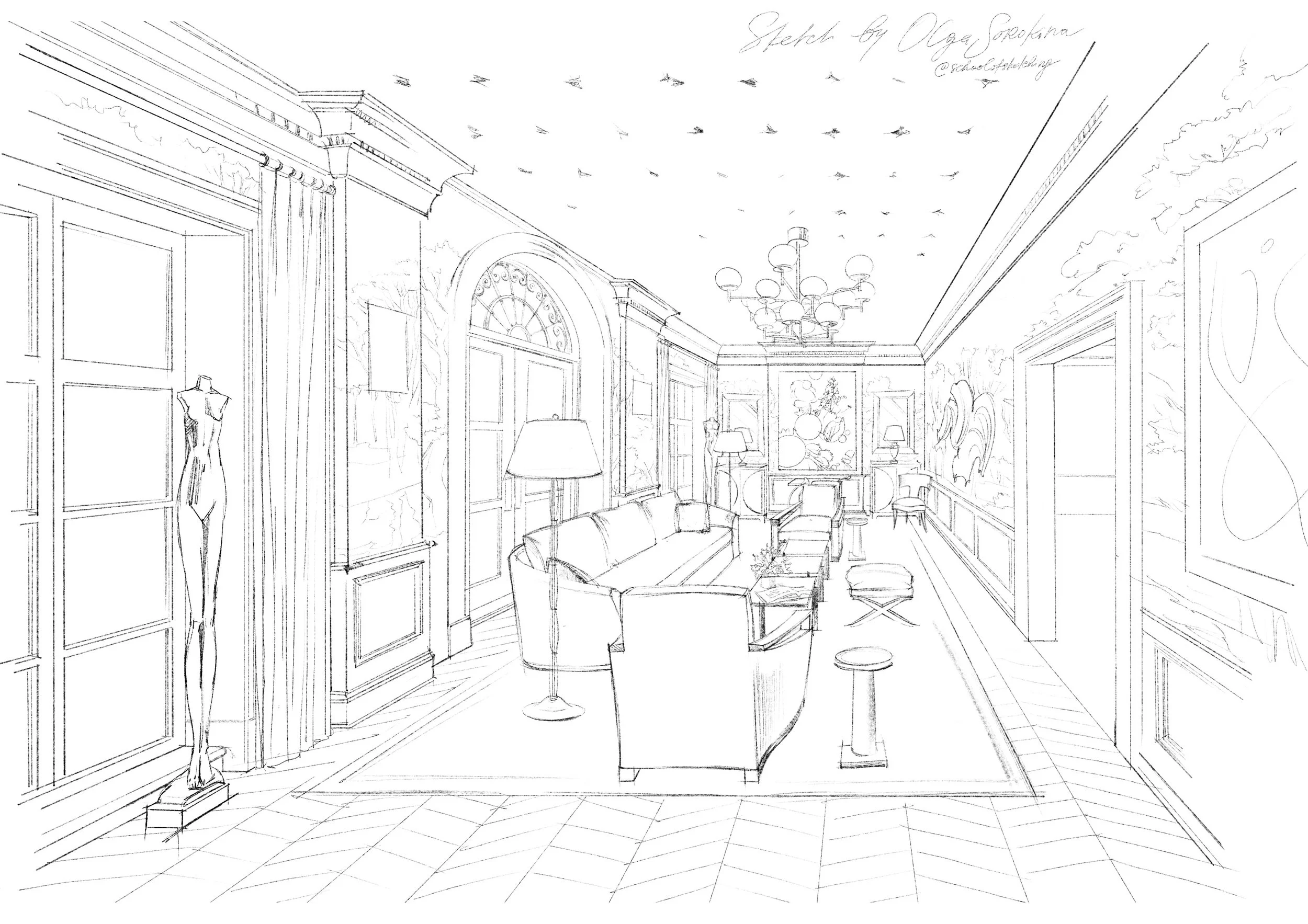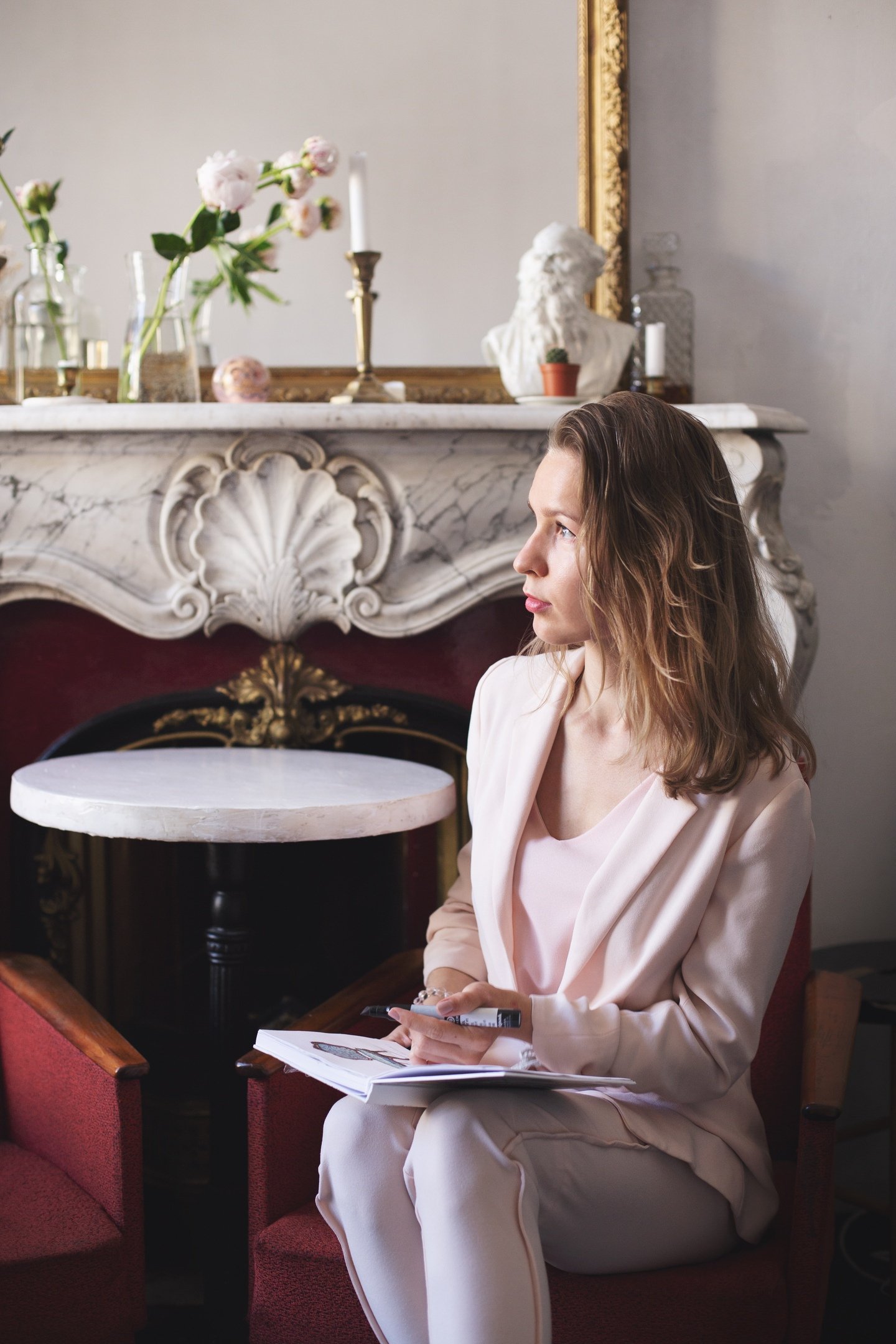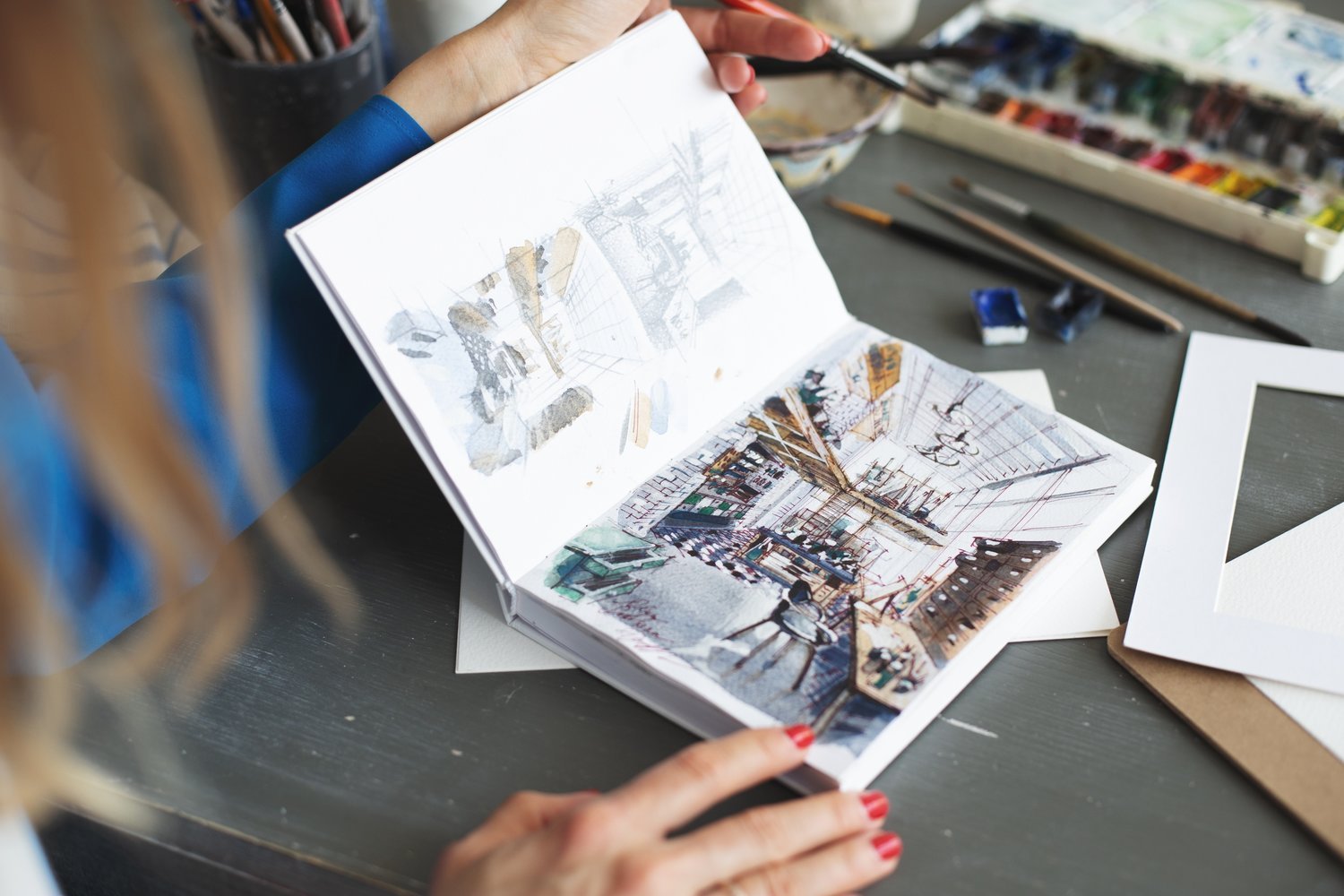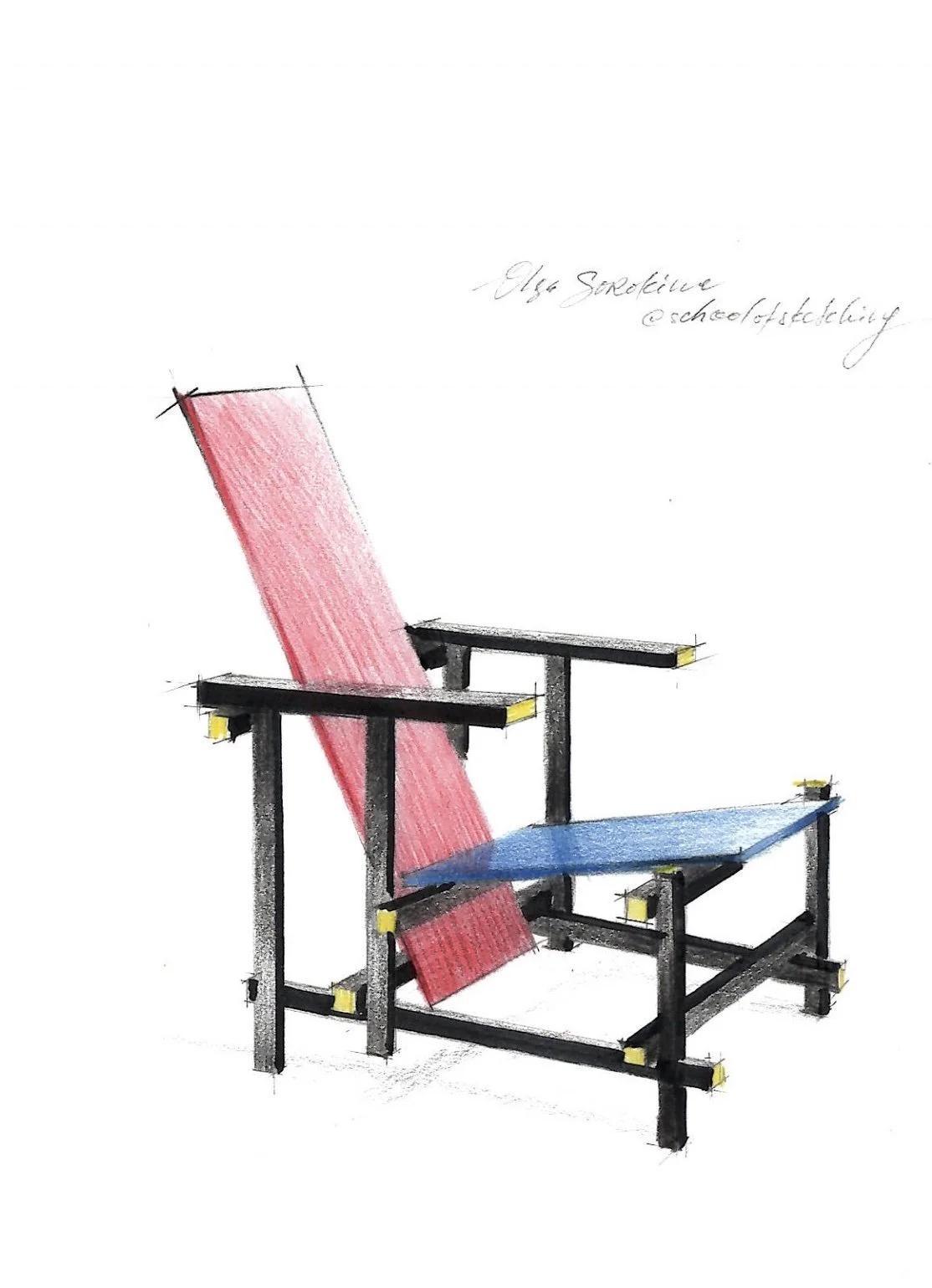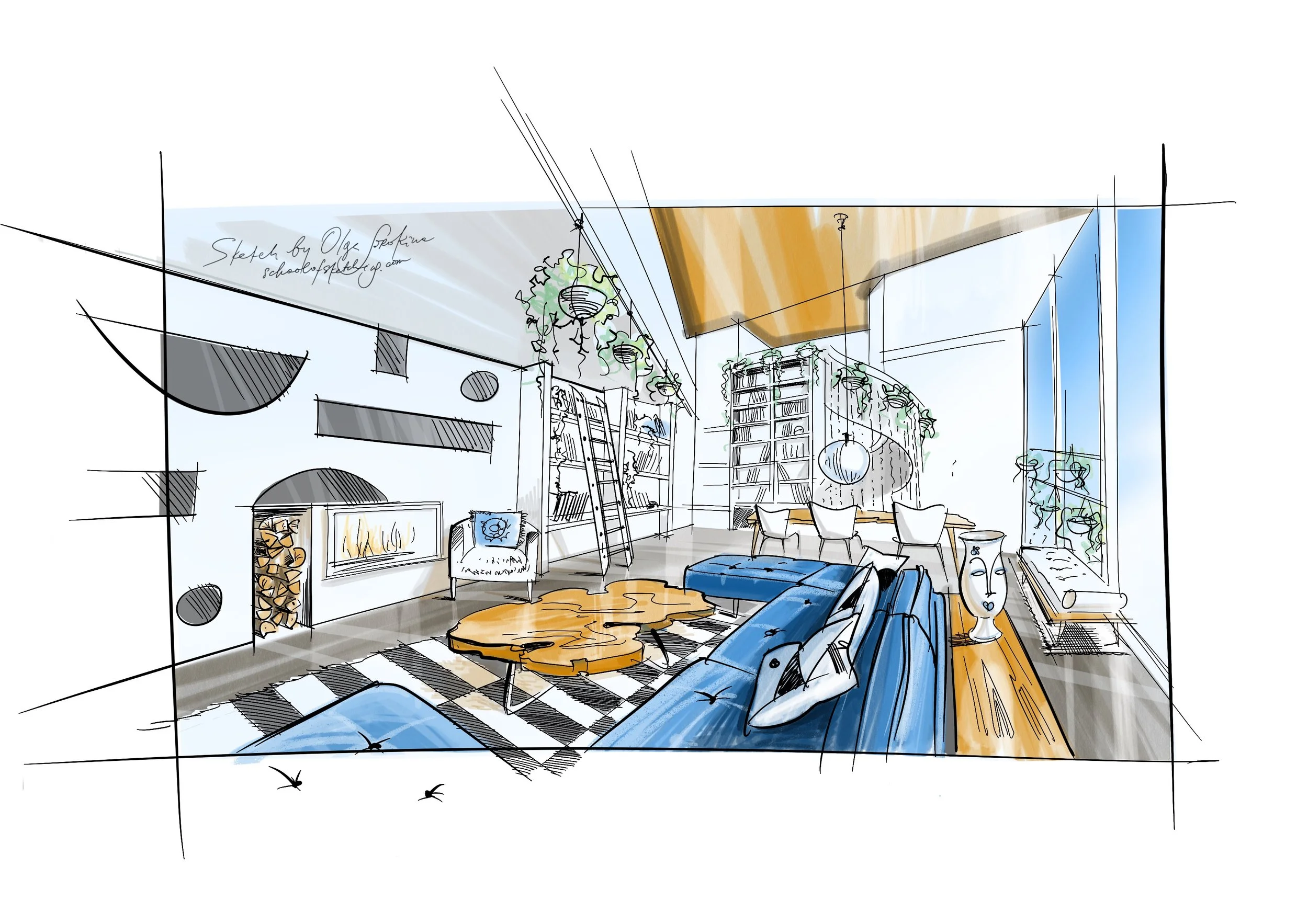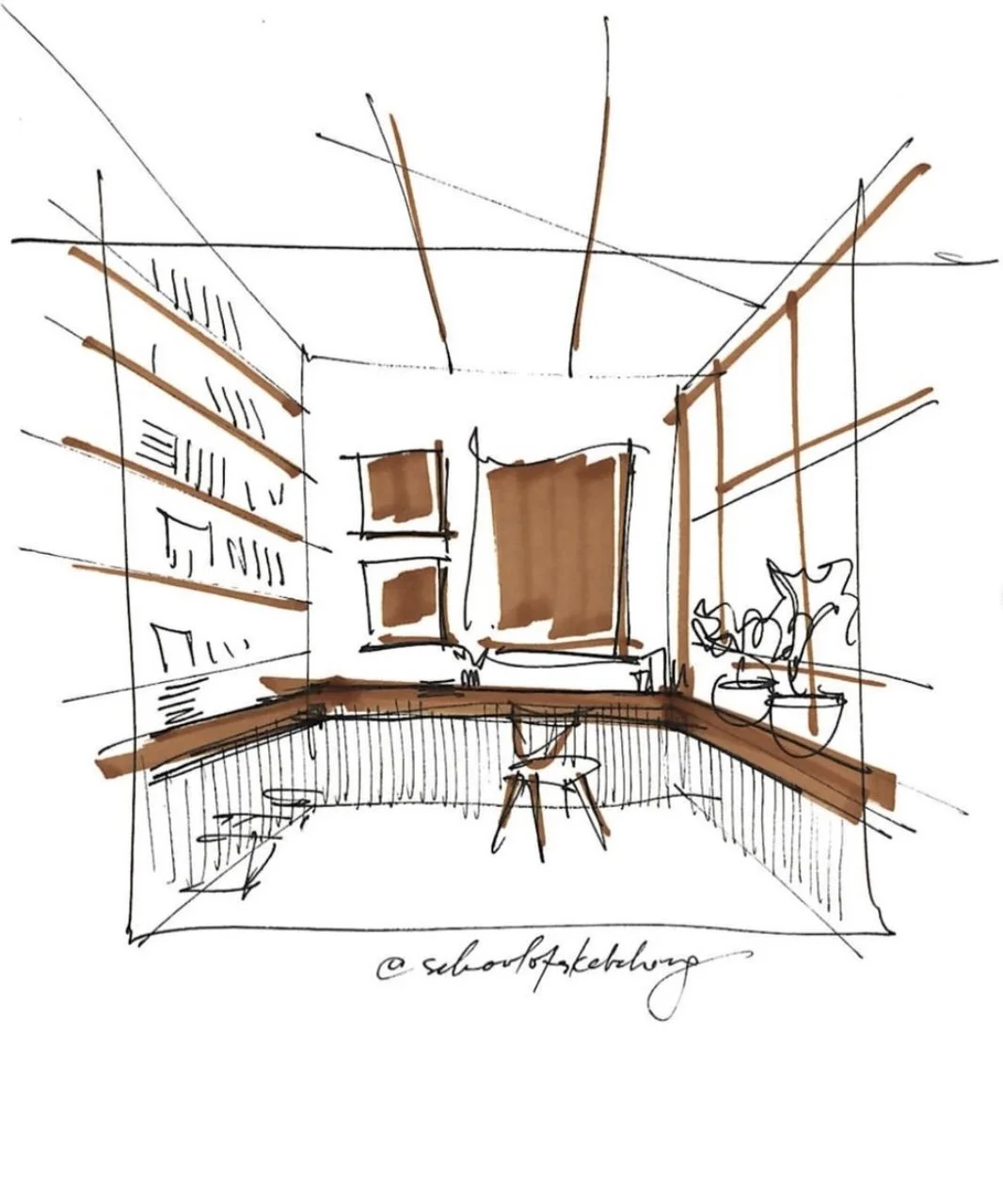“The future of sketching isn’t digital or analogue — it’s both.”
Introduction
When I was a design student, I once attended a lecture by a talented designer Artemy Lebedev. He said something that has stayed with me ever since:
“At any given moment, every idea already exists — it might just be realized by one percent or by a hundred.”
As a typical creative person, someone who wakes up with new ideas every day, this thought struck me deeply. There’s always more imagination than time. I’ve carried this truth through my entire career as a designer and sketch artist.
In my work, every idea starts as a seed. Some bloom quickly, others take months or even years to grow. The timeline for creating is so different across scales: a commissioned sketch might take four or five days, an interior design project five to six months, a full project with the supervision usually up to two years, and architecture about three to four years.
It’s like planting a seed and watching it grow into something tangible. Even nature reminds us: it takes forty weeks to bring a child into the world.
AI, in this sense, is like a catalyst. It can accelerate what we create, helping us turn ideas into reality faster. But more than that, it has the power to make us kinder, more thoughtful, and more reflective or more impatient and disconnected. Everything depends on your perspective. Any tool can be medicine or poison — it’s all in how we use it.
With AI, as with creativity itself, there’s no universal speed or pressure. You can do AI in your own rhythm.
“At any given moment, every idea already exists — it might just be realized by one percent or by a hundred.”
Why Sketching Matters Even More These Days
In the fast-changing world of interior design, visual communication remains one of the most powerful tools we have. While digital tools have accelerated workflows, many designers still crave the expressive warmth of hand-drawn sketches, those imperfect, living lines that carry emotion, story, and intent.
Today, a new balance is emerging — one that unites analogue and digital practices with the possibilities of artificial intelligence. This hybrid approach doesn’t replace hand drawing — it expands it.
From Pencil to Pixel: How Design Thinking Evolved
When we sketch by hand, we externalize our thinking. The line on paper becomes a dialogue between the designer and the idea. This reflective process, described by Donald Schön as “thinking in action,” helps us discover solutions we didn’t even know we were seeking.
But as design practice became increasingly digital, this tactile relationship with drawing often faded. Many began to rely on software to produce images rather than develop ideas. The challenge now is to reconnect these two worlds — to bring intuition back into the digital process.
Hybrid Workflows: When Analogue Meets Digital
A hybrid sketching workflow allows you to move fluidly between tools — sketching by hand, scanning or photographing the drawing, and continuing to refine it digitally. Apps like Procreate, Morpholio Trace, or even AI-assisted platforms such as Midjourney make this transition seamless.
For example, you can start a concept in pencil, exploring perspective, composition, and light, and then continue digitally: add color, test materials, or experiment with overlays. This way, you maintain authorship and intuition, while expanding your creative range through technology.
Sketches and 3D renderings from my diploma project
“The goal isn’t to speed up drawing — it’s to deepen the conversation between hand, mind, and machine.”
Want to integrate digital sketching into your workflow?
In my Procreate for Interior Sketching course, you’ll learn how to combine hand drawing with digital precision, step by step.
AI as a Creative Partner
In my own experiments with Midjourney, I’ve explored how analogue sketches can serve as prompts for AI reinterpretation. By uploading a hand-drawn line sketch and letting the algorithm suggest color or texture, I can observe how AI “reads” design intent, how it imagines atmosphere. This isn’t about letting AI design for us, it’s about using AI as a reflective mirror, a partner that challenges our imagination. Sometimes the results surprise me, revealing directions I might never have drawn myself.
“When we involve AI, we don’t lose creativity — we expand it.”
Watch how it works
See how I color a hand-drawn sketch using Midjourney’s retexture feature, a quick, inspiring process that bridges hand drawing and AI.
Why It Matters for Interior Designers and Architects
For interior designers and architects, sketching is more than a presentation tool — it’s a way of thinking visually. In hybrid workflows, hand sketching preserves authenticity and human touch, while digital and AI tools bring agility, iteration, and polish.
Together, they help us teach and practice visual intelligence, the ability to think through drawing, communicate spatial ideas clearly, and bring emotion into design.
The Future of Sketching
The future of interior sketching is not digital or analogue — it’s both.
It’s a dialogue between tradition and innovation, between human intuition and machine intelligence. Designers who embrace this hybrid mindset will not only draw faster, they’ll think deeper, communicate clearer, and design with more meaning.
Read also from my blog:
Happy Sketching!
Olga Sorokina
P.S. If you enjoyed this blog article, please share it with your peers. Thank you in advance!
Stay inspired
Subscribe to my newsletter to receive new sketching methods, perspective tips, and insights on creative workflows.
